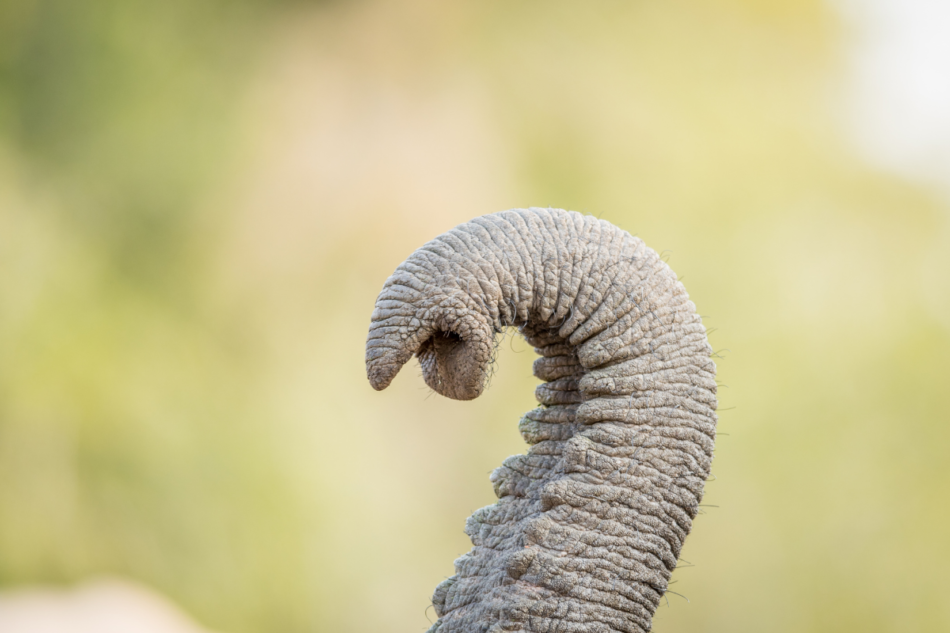The Kruger National Park is one of Africa’s largest game reserves and offers an authentic wildlife experience with a viewing of the Big 5 and thousands of other species.
Content
- How to get to the Kruger
- An interesting creature to spot at the Park
- How many different species are found in the park
- Is the Kruger National Park a Malaria Region
- When is the best time of the year to visit the Park and WHY
- What MUST you pack when going on a vacation to Kruger?
- The Main Entrance Gates into the Kruger National Park, regions, and times
- The Best Region to visit within the Kruger Park
- Interview with Trish Livanos – a constant Kruger visitor
- Discover the Big 5 & other Bush Animals
It runs northeast of South Africa covering 352 km of the bush, mountains, rivers, grasslands, waterfalls, and a mixed terrain from south to north. Accommodations both luxury lodges and affordable are available both within and just outside the park, allowing the guest a pleasant comfortable stay. Qualified and experienced tours are offered at affordable rates.
How to get to the Kruger
Organized Tour
If you are with a tour group, all your traveling would have been prearranged for you. Have a look at African Budget Tours for Seniors and Tour radar. Cook’s Air Tours and Safaris is fabulous. I know William well and he will look after you and meet all your needs.
By car – self-drive
If you are getting to the Kruger by yourself, you can drive there from Johannesburg, which will take you approximately 6 hours. The roads are good and there are plenty of petrol stations. If you are like me, it will take you longer as there are spots you just have to stop at. I love the drive up and the views and scenery are spectacular. Maybe stay over two nights at my beloved small town Graskop (which means grassy hillock) in Mpumalanga, at the Graskop Hotel. The next day no need to rush, go and view all the wonders around Graskop.
Around Graskop, you can view God’s Window and it is called God’s Window because of its implausible magnificence. There is a small charge to enter the viewing site, for parking and toilet facilities, but the view will blow your mind! The distance is only 9.2km from Graskop and is situated within the Blyde River Canyon overlooking cliffs that drop drastically to the greenest canyon in the world!
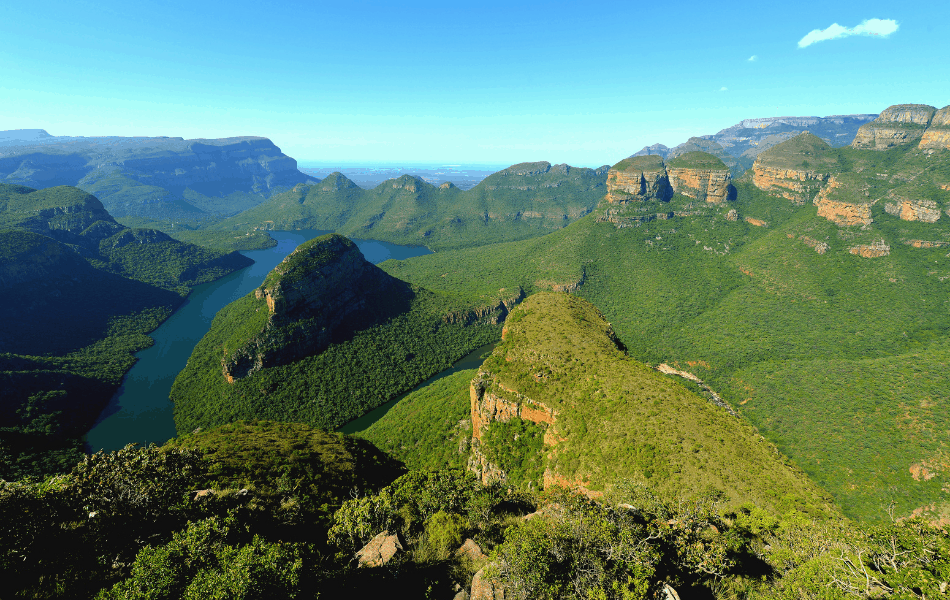
Encounter the rainforest boardwalk and view the moss, streams, and abundant growth. Organize with the hotel to prepare a picnic and take your time to capture the fairyland.
There is so much more to do around Graskop. Have a look and choose. If you would like to view it all, maybe spend a few more days at the hotel.
Flying
Direct flights from Johannesburg and Cape Town go to the Kruger Mpumalanga International Airport (MQP). From there, it is only a 50-minute drive to the Numbi Gate at Kruger. Cars can be hired at the airport and you will not have that long drive from Johannesburg. The flight from Jo’burg is only 50 minutes.
Why not fly directly to Skukuza Airport which is inside the Kruger National Park via Flyairlink?
Some of the luxury lodges have their own landing areas which means you can fly directly into the lodge you are staying at. Confirm this with the lodge.
| I will also be doing a separate article on recommended private lodges that will totally excite you, and the experience you will encounter at any of them will take you on a journey that you cannot experience anywhere else in the world! |
An interesting creature to spot at the Park
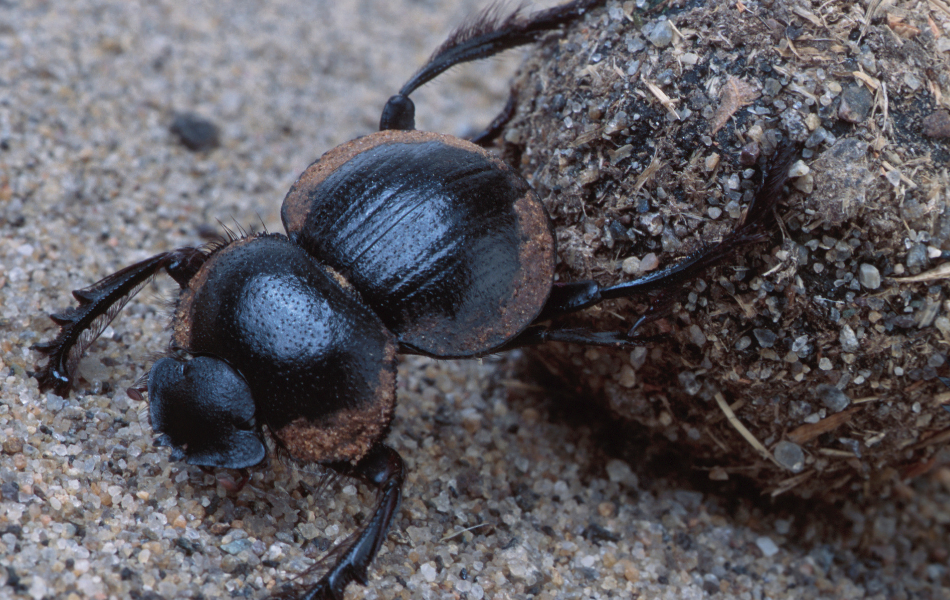
Yes, a Dung Beetle is vital to the park and is very prevalent throughout. They are the “clean up” work party that removes all the harmful bacteria, pathogens, and faeces from the millions of mounds of dropped dung throughout the reserve. Born to be a star example of recycling and reusing. Their life span is 3 years. There are 3 main types of dung beetles and when you are in the park, see if you can spot them.
- The dwellers live inside the dung and the females lay their eggs inside. When the larvae hatch they munch away on the dung that surrounds them.
- Tunnellers make tunnels inside the dung, both male and female, and then the female stays inside and lays her eggs.
- Rollers are the ones that fascinate me the most. They do the rolling of the dung into balls and roll them away, then bury them to lay one egg inside and eat on the nutritious dung later.
How many different species are found in the park
| Species | Stats | Quantity of variety species |
| Mammals | Insectivora (shrews etc), Macroscelidae (elephant shrews), Rodentia (rodents), Artiodactyla (pigs, giraffes, hippos, antelopes), Hyracoidea (dassies), Perissodactyla (rhinos, zebra), Lagomorpha (hares), Tubulidentata (aardvark), Chiroptera (bats), Primates, Pholidota (pangolin), Proboscidea (elephant), Carnivora | 148 |
| Birds | 505 | |
| Reptiles | 118 | |
| Fish | Includes 3 exotic species | 53 |
| Amphibians | 35 | |
| Plants | Mosses, Aloes, Sedges, Trees and Shrubs, Ferns, Grasses, Others (herbs, succulents, lianes, etc | 1990 taxa |
Can you believe there are 42 different species of bats (Chiroptera) and 27 different types of Carnivora? Just to name a few! The Kruger most certainly has every aspect of interest for each nature lover! When you are on safari, see if you can spot the 3 different species of hares.
Is the Kruger National Park a Malaria Region
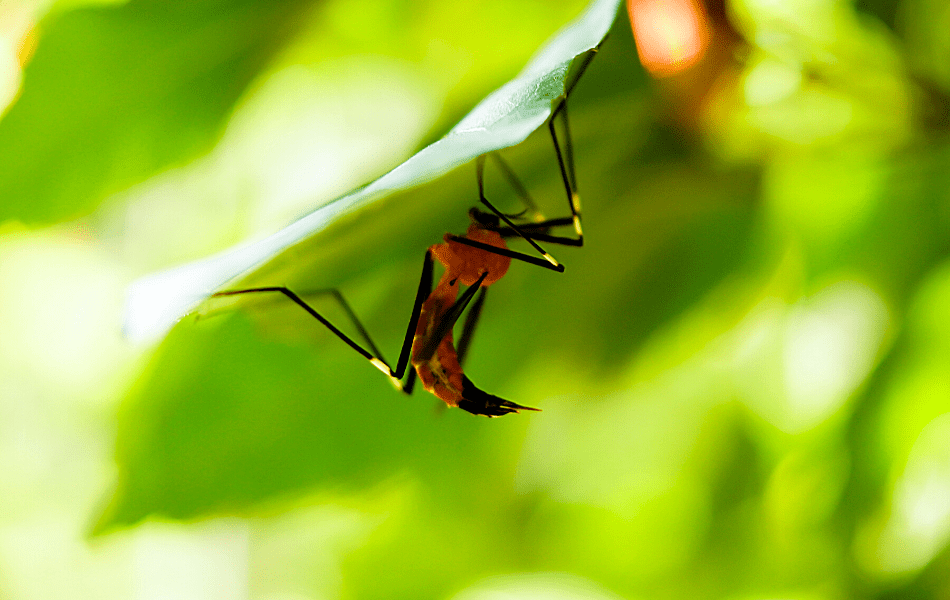
YES! Make sure you take the correct MEDICATION for malaria before visiting.
The risk of malaria in this area is low, but rather be sure than sorry. Malaria comes from 4 different types of infected mosquitoes. You can become very ill or even fatally sick if you contract malaria. Symptoms such as high fever, terrible headaches, sweating, nausea, vomiting, abdominal pains, and other symptoms. BUT prevention is easy and advised!
“The preventative medication of choice for visitors to the Kruger National Park and surrounding areas is a combination of CHLOROQUIN and PALUDRINE. Chloroquine is taken on a weekly basis and Paludrine is daily. The first dose of Chloroquine should be taken a week before entering a malaria area to see if there are no serious side effects.
Paludrine can be taken 2 days before entering the malaria area. It is important to continue to take the medication during your stay AND FOR FOUR WEEKS after leaving the malaria area. It is advisable to take the medication at night with food to reduce side effects like nausea.“
When is the best time of the year to visit the Park and WHY
Seasons related to weather, yes, but also the school holiday season! Try to avoid this period.
There are two main seasons. A WET and DRY season.
- WET season – from October to April can get extremely hot. Personally, I do not enjoy going during these months. Temperatures can reach up to 40°C/104°F and above. Generally, it is around 32°C/90°F, with afternoon thunderstorms that do cool the air off, but the humidity is also high and I find these temperatures uncomfortable. The benefits of these months are all the little newborns who melt our hearts. The birdlife is incredible on the lakes and dams.
- Dry season – is from May to September with virtually no rainfall. Temperatures rise to 26°C/79°F and the mornings are fresh at 10°C/50°F. During these months going on guided safaris is perfect, especially the early morning, evening, or night drive. Normally your camp will be close to a waterhole, and during these drier months, the game come down to drinking and swimming. They spend quite a bit of time relishing next to the water, so your viewing and taking photos will be superb! Sleeping I also find during these months is very comfortable.
What MUST you pack when going on a vacation to Kruger?
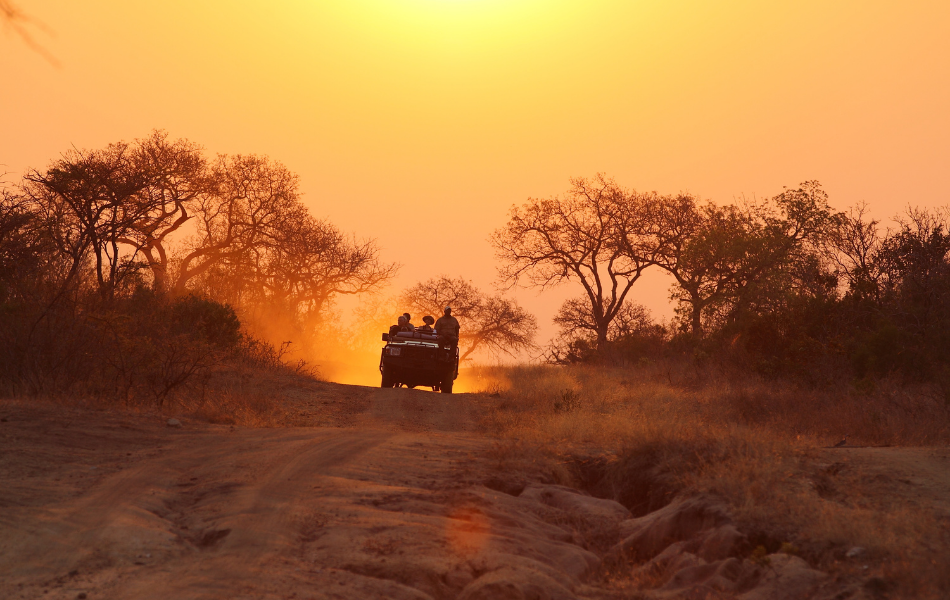
The first question to ask yourself is, is it the WET or DRY season? There will be 4 different stages to your day. Morning game drive, breakfast and lunch, and chill time at whatever lodge you will be staying at, then the afternoon game drive, and finally dinner.
When on a game drive or foot hike wear khaki, neutral, or denim-colored clothing. You most certainly do not want to scare the animals away! Always wear sunblock and take insect repellent wherever you go at whatever time of the day and put it on. Don’t forget your camera, or use your cell phone camera. You will be seeing amazing sites!
Advised clothing for early morning, evening, and night-time game drives
- Your shirt should be long-sleeved. Protect your arms from mosquitoes or other irritating insects and the sun. The Tag Safari Shirt for Women Long Sleeve, 100% Cotton Shirt is made specifically for those out and about in the bush. It is lightweight and you can move very freely inside the shirt. The fabric is breathable, which is essential if you are out for a few hours. A style perfect for a woman and the strength of the stitching is excellent. It has a lovely feel!
- Long pants are also suggested with easy movement. I enjoy a bit of stretch and I also appreciate pockets with zips so I can just take the bare minimum on a drive. Women’s Hiking Pants Lightweight Quick-Dry Convertible Stretch Outdoor UPF 50. These are not heavy, but extremely comfortable. The fabric has built-in protection UPF +50 from the sun. They also have zip-off legs so when you arrive back for breakfast, you can get cooler instantly.
- Take an anorak jacket with you, with a hood in the early hours or evenings in both seasons. Make sure it is long enough to go over your bottom, to keep the thighs warm. Soulomelody Women’s Military Safari Anorak Jacket is very snug and warm without being too heavy. Pockets that are perfect for your phone, sunblock, and nibbles. Easy to peel off if the temperatures rise.
- You will always need a sun hat in Africa for the morning and early evening! Make sure the back of your neck is protected and does not irritate your head or make you sweat. Fabric can also be rolled up. But also bring a beanie for the chills and a scarf.
- Good pair of hiking sneakers and thick socks. Salomon Women’s Cross Hike GTX W Shoe has been recently released and the grip and ankle support are ideal, Been waterproof is relevant in the bush. The Darn Tough Hiker 1/4 Cushion Sock allows your feet to breathe, helps prevent blisters, and is a longer sock, protecting the ankles. Warm when it is chilly and cool when hot. Socks are very important in the bush.
Chill time in comfort and luxury
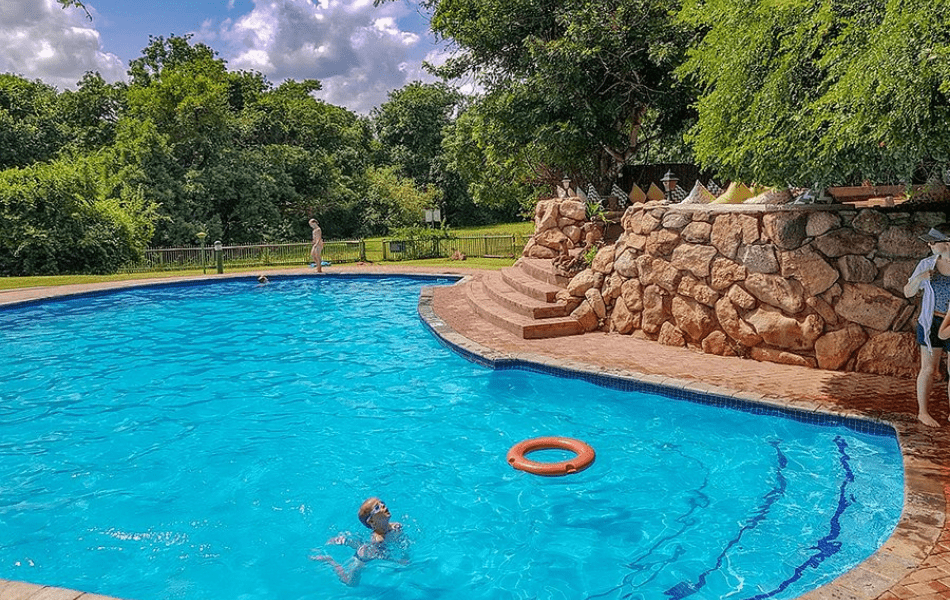
After your morning game drive or hike, return to relax. Grab a scrumptious breakfast, have a swim, and relax next to the pool. Read that book you have been longing to get into.
So bring a bathing suit, sunglasses, T-shirt and shorts. Remember to put on that sunblock!
Dinner Attire
This depends on where you are staying, but still, flamboyant attire is not necessary for the bush. A hoodie, comfortable shoes and pants, long sleeve shirt, and a scarf if you are eating around a campfire or having coffee outside after your meal. The evenings are cooler, but if inside, log fires will warm the dining room, taking into account the most important factor is to be relaxed.
The Main Entrance Gates into the Kruger National Park, regions, and times
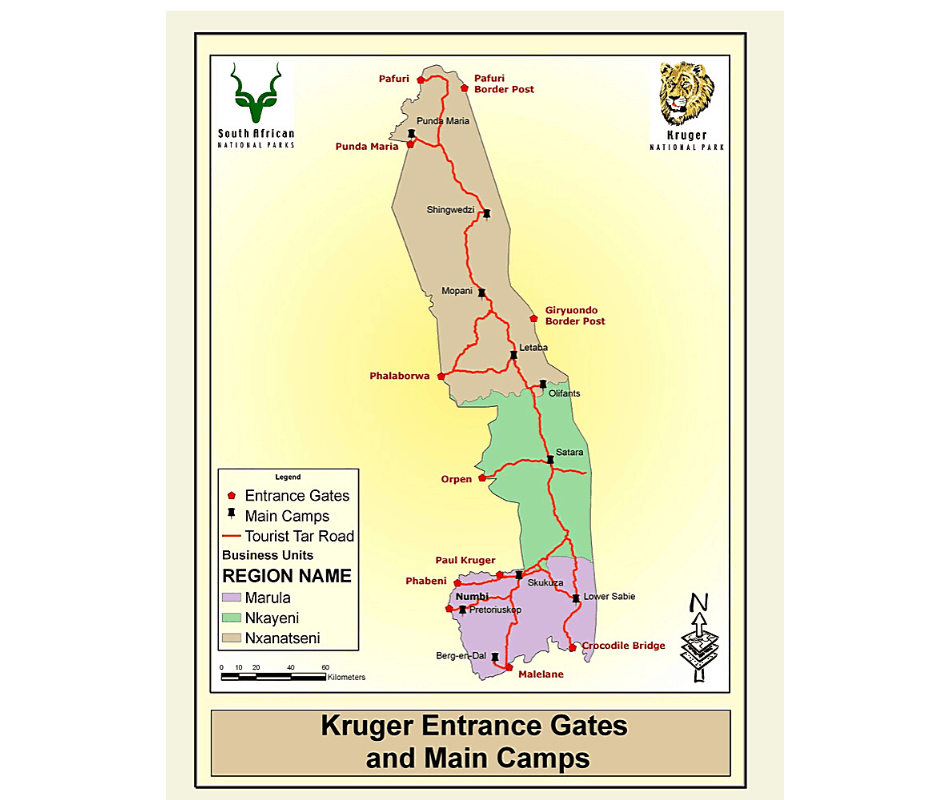
The map above is from the South African National Parks and is a suitable map to get your bearings. There are three main regions: Marula, Nkayeni, and Nxanatseni and it shows the positioning of each entrance.
Take note of the speed limit within the park as great care must be taken that you do not ride over a precious dung beetle or collide with an elephant. On the tar roads, it is 50 km and on the dusty roads, it is 40 km.
Reflect on this if you need to exit through one of the gates or have to get back to your camp if you are inside, or need to travel to another camp before nightfall. On my visits to Kruger, I only managed to go to two camps in the south in one day. Also, think about that herd of elephants that position themselves on the road, won’t budge, and you end up observing them for over an hour. A wild animal knows no time limit!
Remember there is an entrance fee. If you are with a tour group, the tour operator will be responsible to pay for the entrance. You can purchase a SANParks Wild Card which will allow you entrance to over 80 different national parks and reserves in South Africa. This is worth it especially if you are visiting different areas in South Africa.
Times to enter the park and exit vary according to what season you are visiting. April to September, the cooler months when the sun rises later, you are allowed in at 6.00 am and you have to be out by 17.30 from May to July. April, August, and September, the gates close at 18.00.
In the warmer months, the gates open at 5.30 am, and due to the sun setting later, the exit time is 18.00 from August to October. From November to February you can exit by 18.30. Make sure you are out by these times if you are driving yourself. If you are on a guided tour as you are staying at a lodge outside the park, they will know the closing times.
1. Marula Region – Southern region
There are 5 main entrance gates.
- Crocodile Bridge – the best route to the Lower Sabie Camp
- Malelane – the best route to Berg-en-Dal Camp
- Numbi – the best route to Pretoriuskop
- Phabeni – can get to Skukuza
- Paul Kruger – the best route to Skukuza
2. Nkayeni Region – Central region
There is 1 main entrance gate
- Orpen – the best route to Satara – can go this way to Olifants
3. Nxanatseni Region – Northern region
There are 2 main entrance gates
- Phalaborwa – the best route to Letaba and Olifants – also Mopani
- Punda Maria – the best route to Punda Maria and Shingwedzi
The Best Region to visit within the Kruger Park
Nxanatseni up North
If you are a passionate obsessed bird lover, the craziest bird paradise is the Northern Region – Nxanatseni. There are over 17 000 elephants and over 13 000 of them are found north of Olifants. There is concentrated mopane scrubland, so even seeing these elephants is difficult. Further north closer to Shingwedzi Camp which is in riverine foliage, large trees are on the banks of the Shingwedzi River, but alongside the trees, there is less vegetation and the grass is scarce.
Centuries of flooding have created alluvial plains. In the north the “sculptured-like” baobab tree is prevalent. Mopane woodlands are more to the northwest of the park and the elephants enjoy the pods and the protein-rich leaves. Mopane bush is also found throughout the park, whereas if this is the first time you are going to the Kruger, rather do the other regions first.
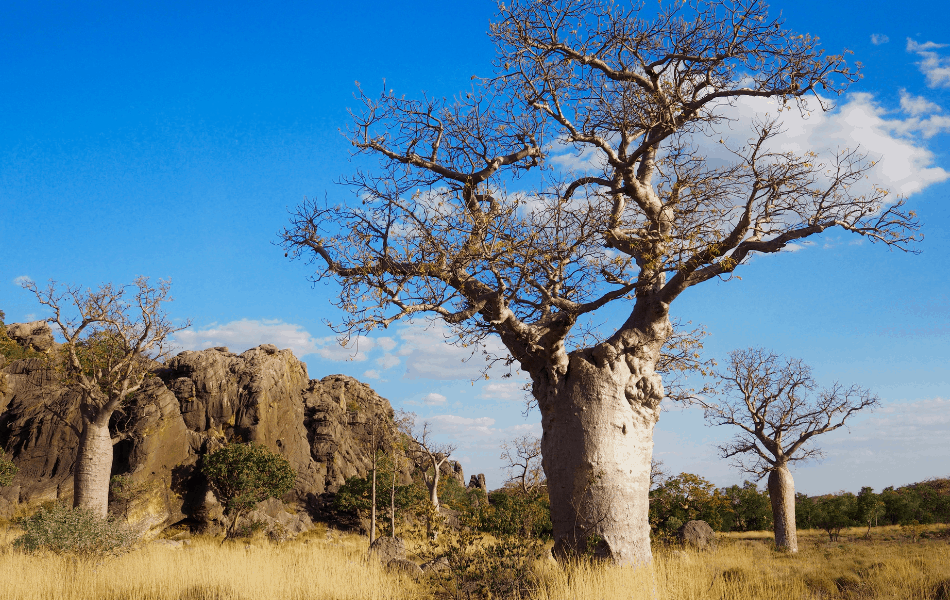
Nkayeni in the middle
This is the region of savannah grasslands. A grazer’s paradise! Herbivores delight in the selection of grasses, such as finger grass and buffalo grass. Where there are herbivores in quantity, you will find the carnivores waiting in anticipation!
The soil is mainly clay which is dark and due to this retains the water, so you will find pans and vleis. I am sure you have heard of the liqueur called Amarula Cream. Well so have the elephants! Amarula is divine and is made from the Marula fruit on the marula tree. This tree is often referred to as the Elephant tree or Marriage Tree and is found on the grasslands, along with other umbrella acacia and ebony jackal-berry among others.
Bundles of tasty fruit of the marula ferment to create alcohol that is very high in vitamin C and the nuts are high in protein. When the fruit is out the elephants eat to their hearts’ delight and many a tourist has observed an elephant, to see if it gets “drunk”. Numerous different bucks, warthogs, and baboons also like to savor this pleasure.
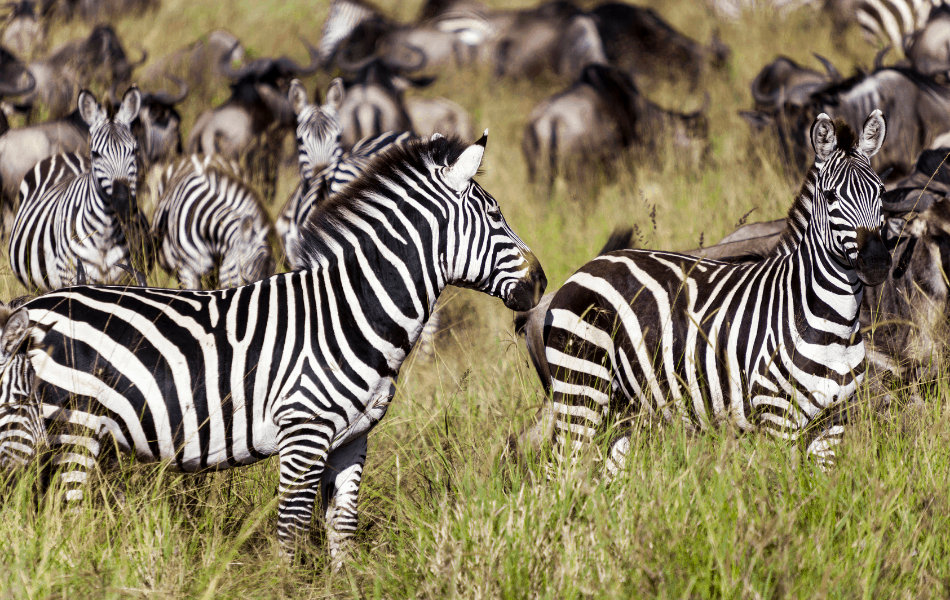
Marula down south
As the name indicates, in this region you get the large marula trees, but also a wide selection of other trees. It is known as the Thorn Thicket Woodlands.
The road that runs from the Skukuza Camp to Lower Sabie runs parallel to the Sabie River. When you have a river, you will find numerous game, and generally, all the Big 5 can be viewed on this very popular route.
Further south, the vegetation gets thicker, which often makes the game more difficult to view, but during the cooler months, you will spot an enormous amount of bucks, lions, and rhinos. This area is home to the rhino compared to other regions in the park and you will be able to see a large amount.
Interview with Trish Livanos – a constant Kruger visitor
Good day Trish, thank you for giving your time today to share your numerous visits to the Kruger National Park. Over the years I have found your input and knowledge invaluable in all your ventures up to Kruger and the surrounding areas. So often senior travelers want to visit the Kruger, but wherever they search they just find the same facts, and often not what they need to know. I would like to ask you 10 questions, which will assist the senior readers with their choices when visiting and planning their trip.
| Ques 1. Over the years, how many times can you say you have visited the Kruger National Park? Why did you go up to the park so regularly? |
| Being a curio rep I was in the park 4 times a year, for many years, supplying the curio shops. |
| Ques 2. When you have gone to the park, have you ever taken malaria medication? What do you advise the tourist to do, take the medication or not? I know you are not a medical practitioner, so I am just getting your subjective advice. |
| No, I have not, because I was there so often. Also, you are taught to look for symptoms. Tourists should take malaria tablets! |
| Ques 3. On your trips, when would you go up? The wet summer season or dry winter season? Could you explain to our readers why you regard this time of the year the best? |
| I went up every three months, but the drier seasons are more pleasant for a tourist and more game can be seen. |
| Ques 4. During this time of the year, what do you regard as a MUST to pack in your suitcase other than the normal long pants, long shirts, hats, etc? Your handbag is always a treasure kist with all the practical things inside. |
| Lots of mosquito repellent, a torch, and a warm jersey for the cooler nights. Also, take up a basic medical aid kit for headaches, or any other bug you caught before going up. I always have a pocket knife in my bag, with everything on in case I need it. |
| Ques 5. There are mainly 3 different regions of the Kruger. South, Middle, and North. If they are a first-time visitor, which region which you recommend they visit on there their first trip and why? |
| Middle as the wildlife is abundant. |
| Ques 6. There are so many different gates to enter the park. Which gate would you recommend they enter through and why? Is there a backlog of cars at the gates? Are they very busy? |
| Kruger Gate is your first stop at Skukuza. There is so much to see there from the moment you enter and for birders, there is a hide just before Skukuza. During kids’ holiday time, there can be a backlog at all the gates. |
| 7. As the audience reading this will mostly be 50 years and over, which camps would you suggest they stay at, once inside the park? Also if you could give us reasons for this. |
| The two best camps where viewing can be done in abundance are Satara (a very popular area for seniors) and Letaba. Letaba and Lower Sabie are the two best camps to view the herds of elephants. You have the Letaba and Lower Sabie rivers where the elephants love to congregate. If you want to see wild dogs and rhinos, Berg-en-Dal is the best. |
| 8. How long should a visit to the Kruger be? How many days or weeks? |
| About a week as the park has much to offer and there is just too much to see in only a few days. |
| 9. Are there shops within the park where they can purchase essentials to cook their own food and restaurants where they can eat out for any of the meals? |
| Shops are at all the camps where you can buy your essentials and food and some of the camps have restaurants. |
| 10. Which game drive do you think is the best to go on, morning or evening? Do you think it is better to go on a guided tour, rather than driving yourself? |
| Very early in the morning and for the first-time tourist, a guided tour with a qualified game ranger. |
Discover the Big 5 & other Bush Animals
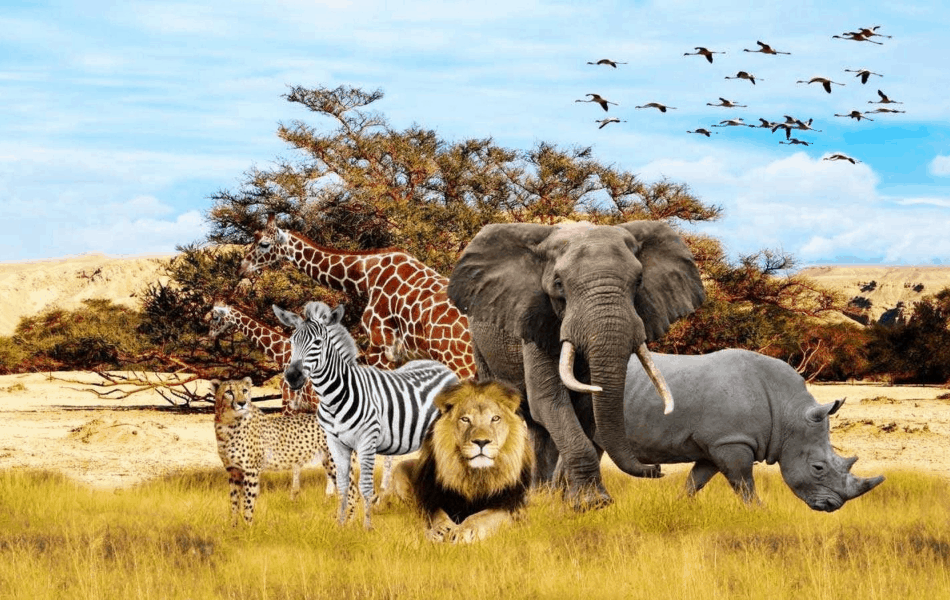
This is why you are coming to the Kruger National Park! It is an adventure vacation, but with the luxuries of being looked after! View my blog on recommended accommodation.
Travelers throughout the world visit South Africa and the Kruger specifically to have a safari involvement. View the blog on the different animals you must spot.
Visiting a game reserve in South Africa is most certainly an adventure. Other articles I have written on the Kruger National Park, which are worth a read are:
“There is something about safari life that makes you forget all your sorrows and feel as if you had drunk half a bottle of champagne — bubbling over with heartfelt gratitude for being alive.”
Karen Blixen “Out of Africa” author
If you have visited the Kruger National Park and can add to the “Tips to know before you visit Kruger National Park”, please do. We would like everyone to enjoy the experience and know whatever tips they can before going. Please add to the Comments section.
Recent Posts
Discover insider tips to find cheap flights from the UK, save on easyJet, Ryanair & BA, and score the best weekend and last-minute deals. Why You’re Paying Too Much for Flights Most UK...
Discover the sounds of travel, from laughing kookaburras to market chatter, church bells to ocean waves - a journey heard as much as seen. It always starts with a sound. The other day, walking...

